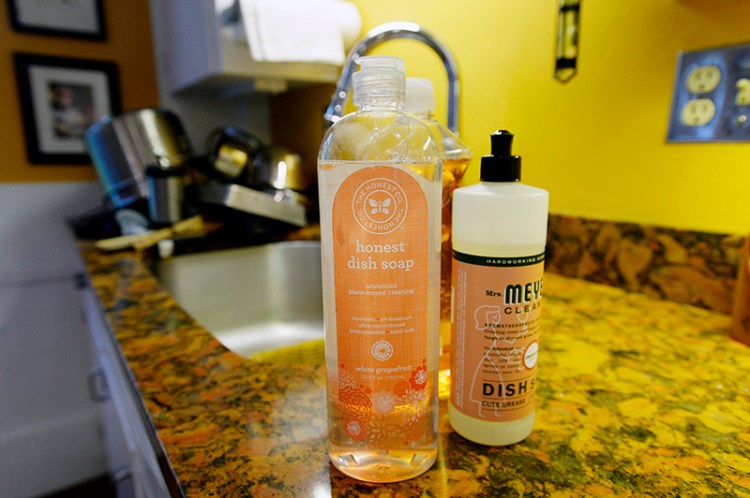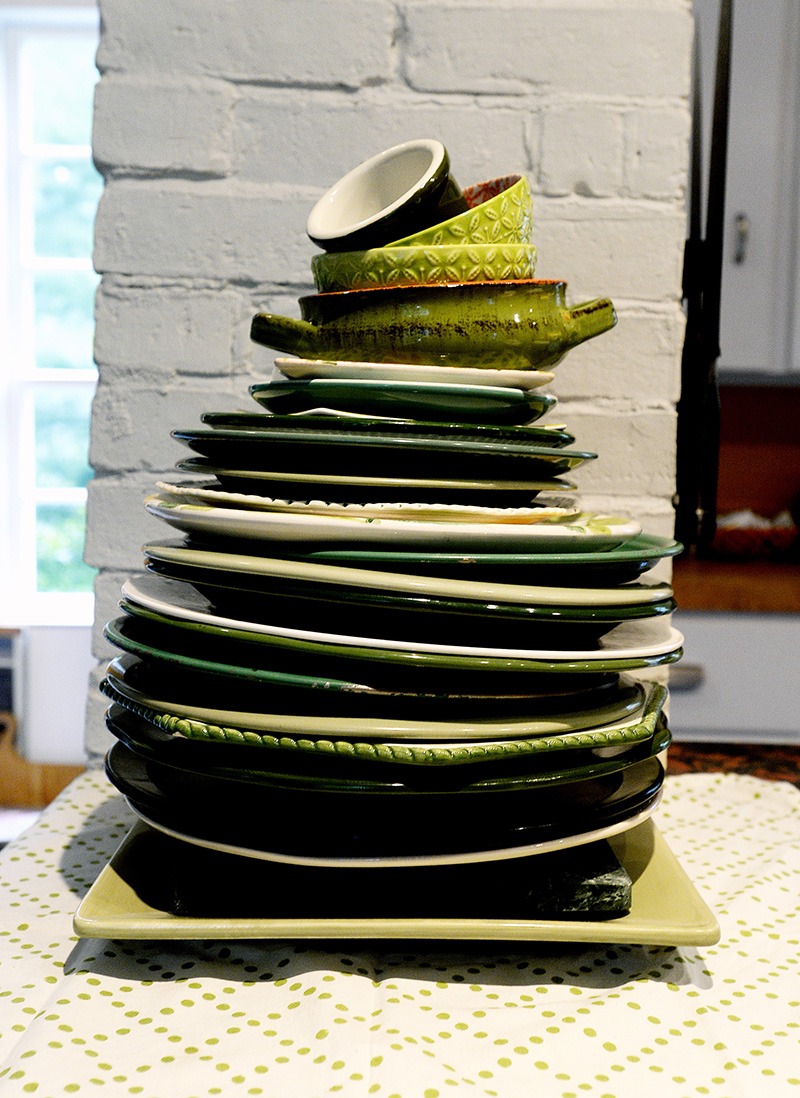I have certainly failed at stuff in my life. Skiing, for example. Or remembering people’s names. I’m rubbish at that. And that time I was waiting for a whole beef tenderloin to hit 115 degrees Fahrenheit with the meat thermometer set for a Celsius reading was a big fiasco.
But I’ve never actually gotten a big, fat F on anything. Well, until I looked up the Environmental Working Group’s Guide to Healthy Cleaning eco-grade on my dishwashing soap, that is.
In my line of work, I go through a lot of the stuff. A typical recipe development session takes four or five tries to get right and three subsequent tests to make sure it works as written. That makes for a lot of dishes. I run through a 28-ounce bottle of dishwashing liquid a week.
Turns out I’ve been dipping my hands in formaldehyde and washing polysyllabic preservatives down the drain that don’t get completely filtered out of the water by sewer treatment plants or septic systems and can cause problems in lakes, streams and rivers.
Dishwashing soap is one of those little things that adds up, so I can no longer ignore that there are better choices.
All modern dish soaps are different from the plain old natural soap my great-grandmother used because they are surfactants, meaning that the fat molecules in them have been altered to make bubbles and cut grease in order to get dishes squeaky clean. They can originate from natural ingredients like coconut oil, but because of the laboratory alteration, they are not naturally occurring.
Whether these soaps are harmful or safe for a body or the environment depends on the process by which they are made and what else is in the mix.
The Environmental Working Group’s Guide to Healthy Cleaning, GoodGuide.com and the Innovation Institute’s Cradle-to-Cradle Certification all rate dish soaps, but all weigh the hazards differently. For example, GoodGuide.com gives Method Foaming Dish Soap its highest mark because it contains no ingredients that raise health concerns for them and the company’s environmental and social policies and practices place it among the best 5 percent of companies rated by GoodGuide.
But the Environmental Working Group’s Guide pans Method Foaming Dish Soap because it contains multiple polysyllabic preservatives that can cause “acute aquatic toxicity.”
To use these guides, you must understand how the ratings add up. The Environmental Working Group is big on ingredients and their effects on the environment. It also hits producers hard if they aren’t 100 percent transparent about ingredients and is fighting with Congress to make chemical reporting more mandatory than it is now.
GoodGuide is easier on the ingredient marks, but digs deeper into corporate environmental and social practices. And Cradle-to-Cradle weights sustainable production practices as well as product packaging decisions heavily.
Seeing as no one product gets perfect marks in all categories, you need to know which aspects of responsible product purchasing mean the most to you to use these tools effectively.
I have started washing dishes with The Honest Company white grapefruit dish soap. It’s not my great-grandmother’s soap, but I still follow her dishwashing rules – always use a dishpan, only enough soap to get a skim coat of suds on the water and never hand back a dish to the dishwasher with a speck if you can wipe it off yourself with the towel in your hand – as they are indeed environmentally sound, even if she didn’t refer to them in those terms.
Christine Burns Rudalevige is a food writer, a recipe developer and tester, and a cooking teacher in Brunswick. Contact her at: cburn1227@gmail.com.
Copy the Story LinkSend questions/comments to the editors.




Success. Please wait for the page to reload. If the page does not reload within 5 seconds, please refresh the page.
Enter your email and password to access comments.
Hi, to comment on stories you must . This profile is in addition to your subscription and website login.
Already have a commenting profile? .
Invalid username/password.
Please check your email to confirm and complete your registration.
Only subscribers are eligible to post comments. Please subscribe or login first for digital access. Here’s why.
Use the form below to reset your password. When you've submitted your account email, we will send an email with a reset code.